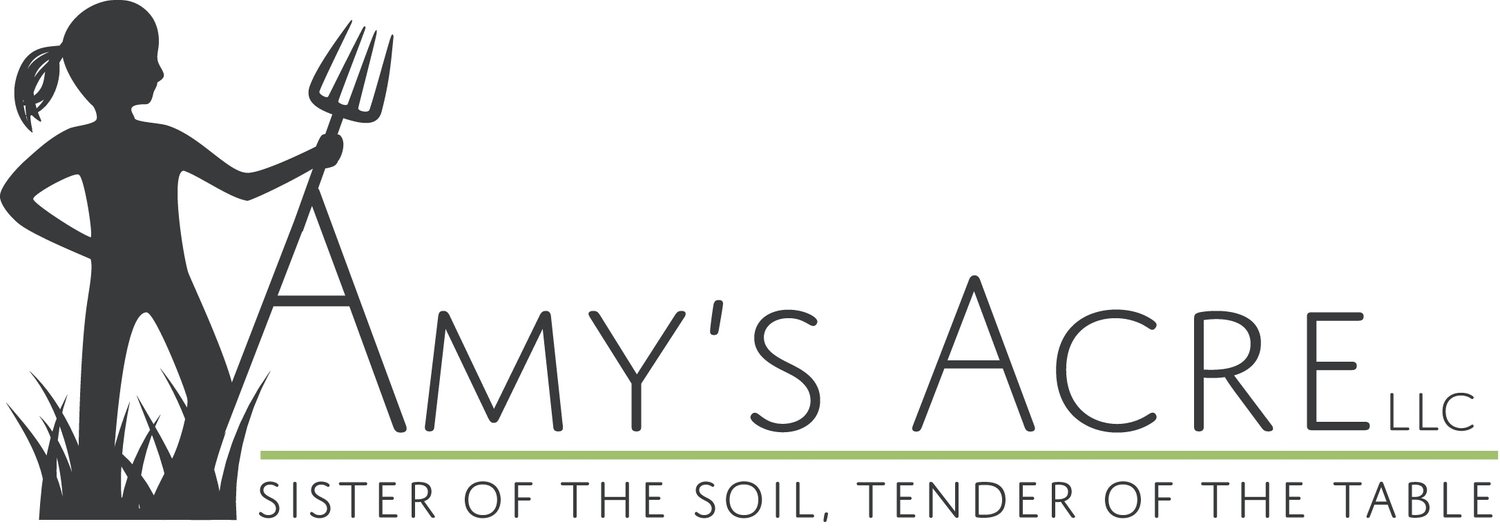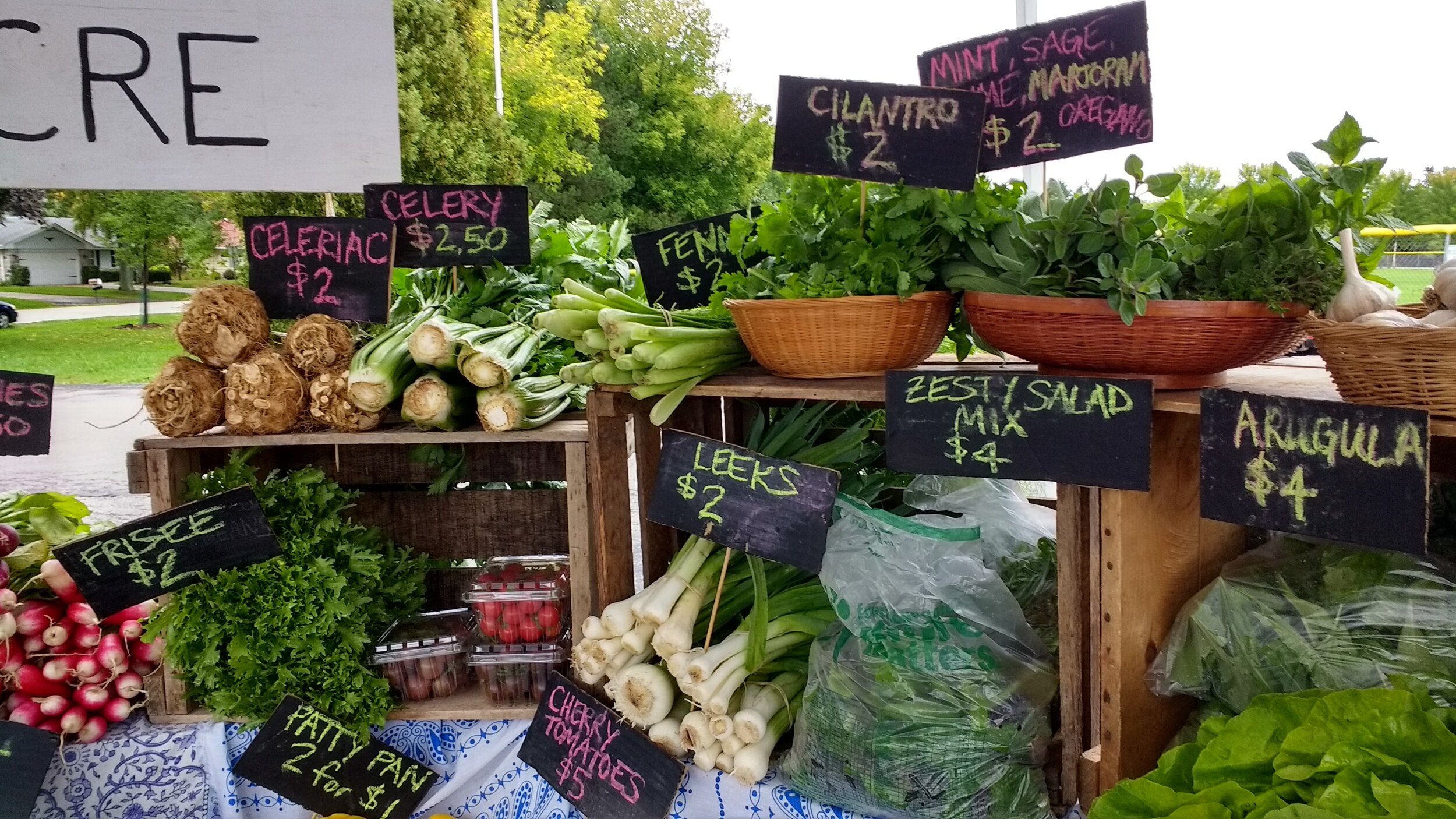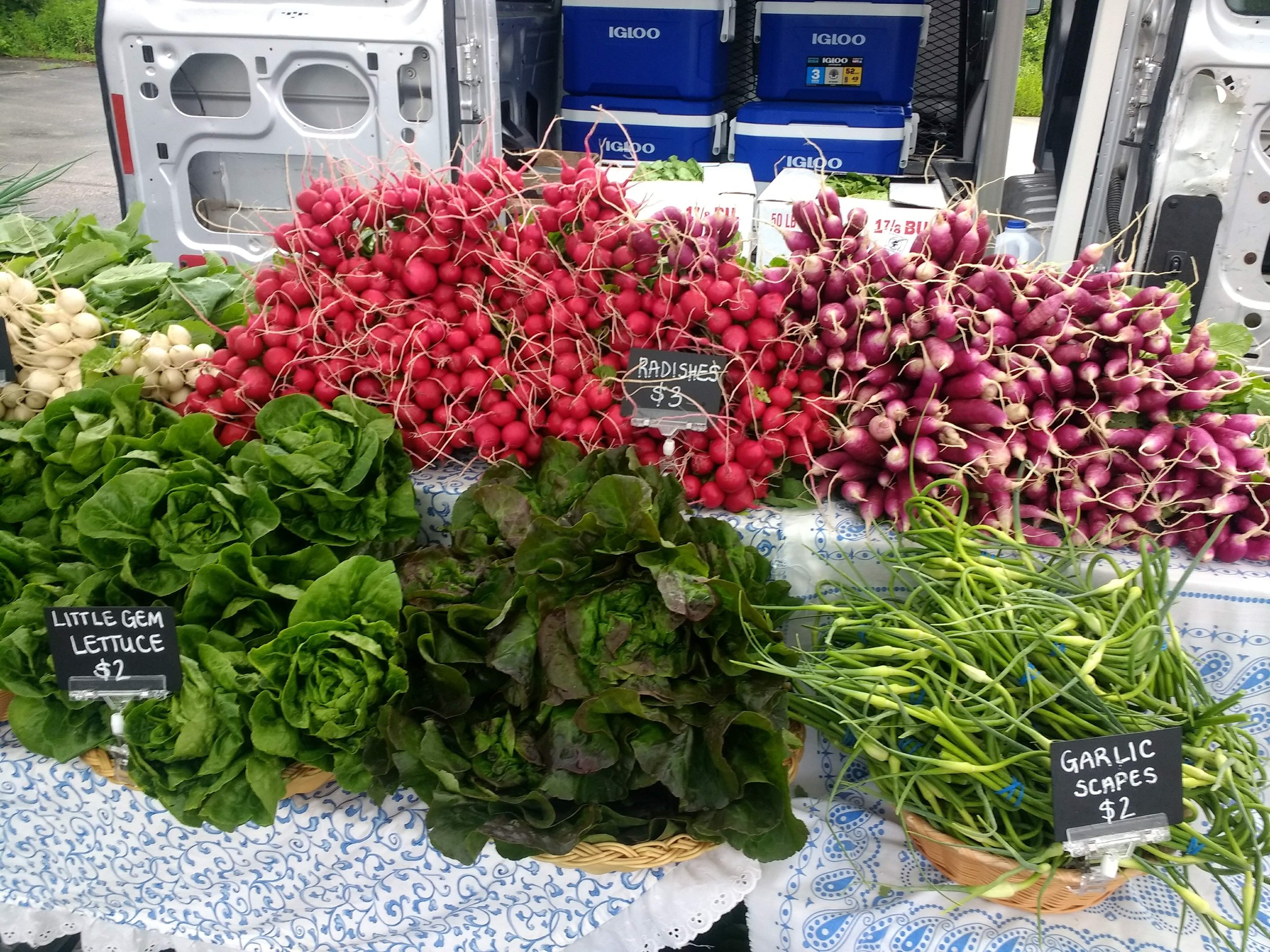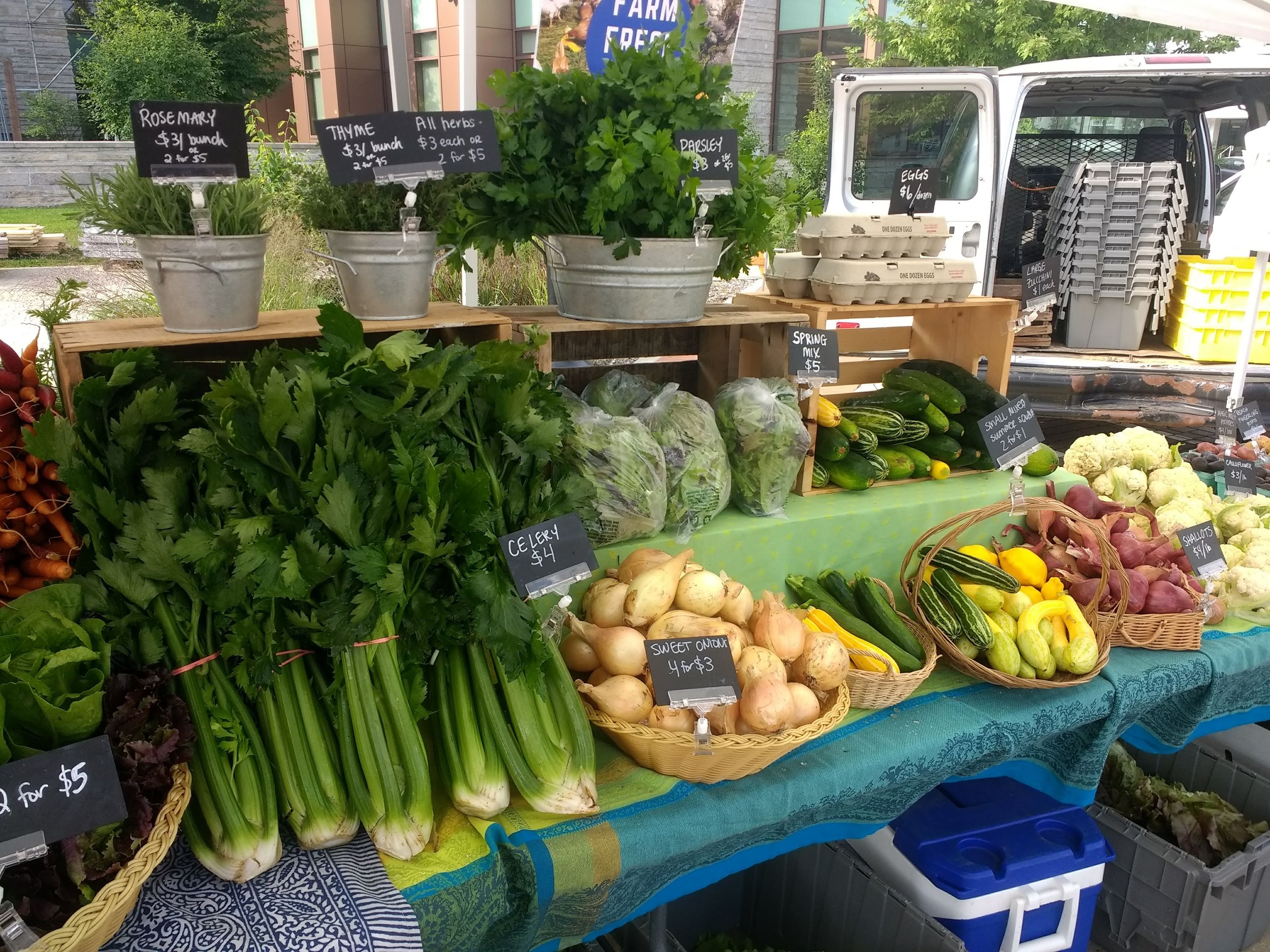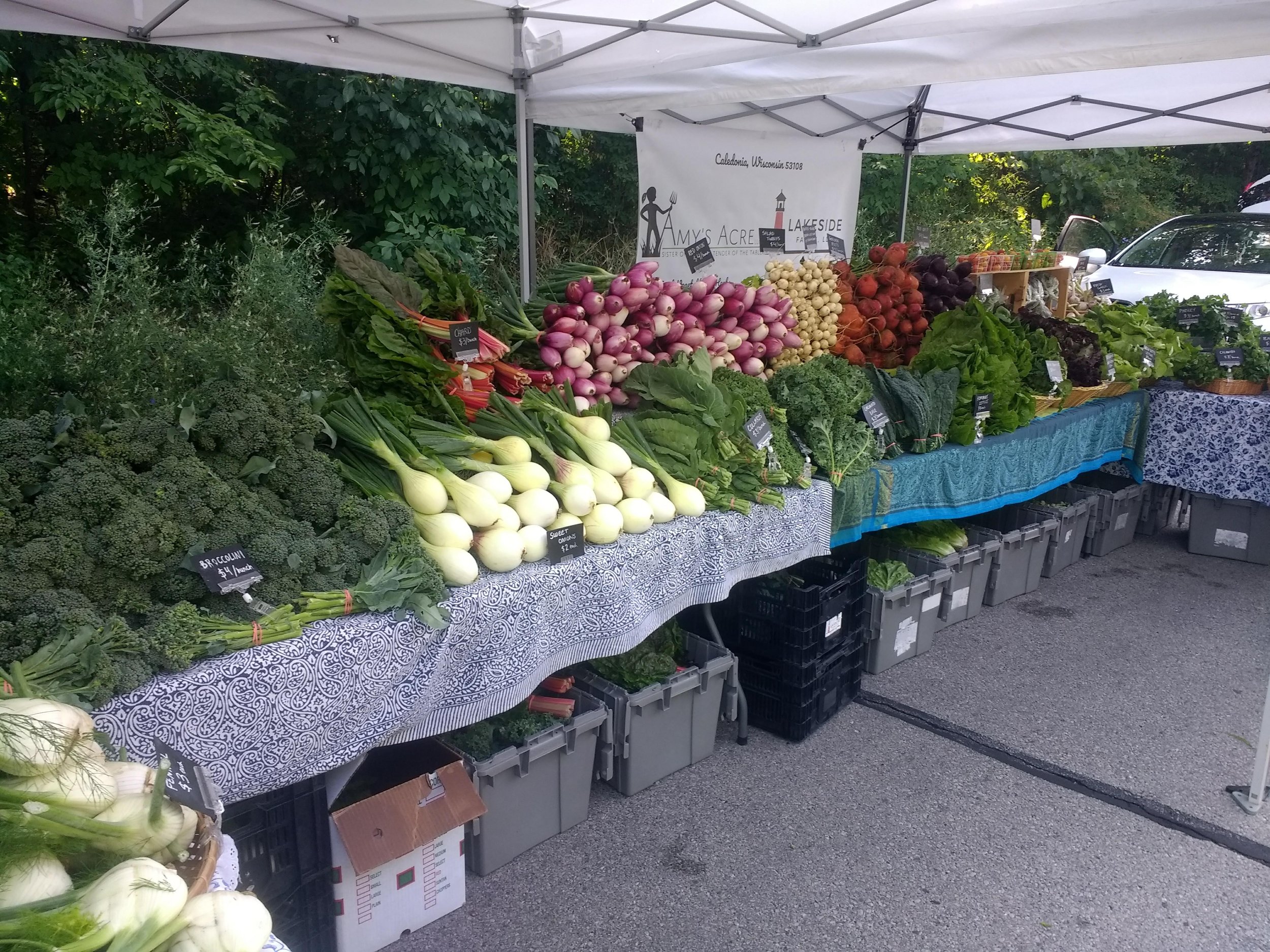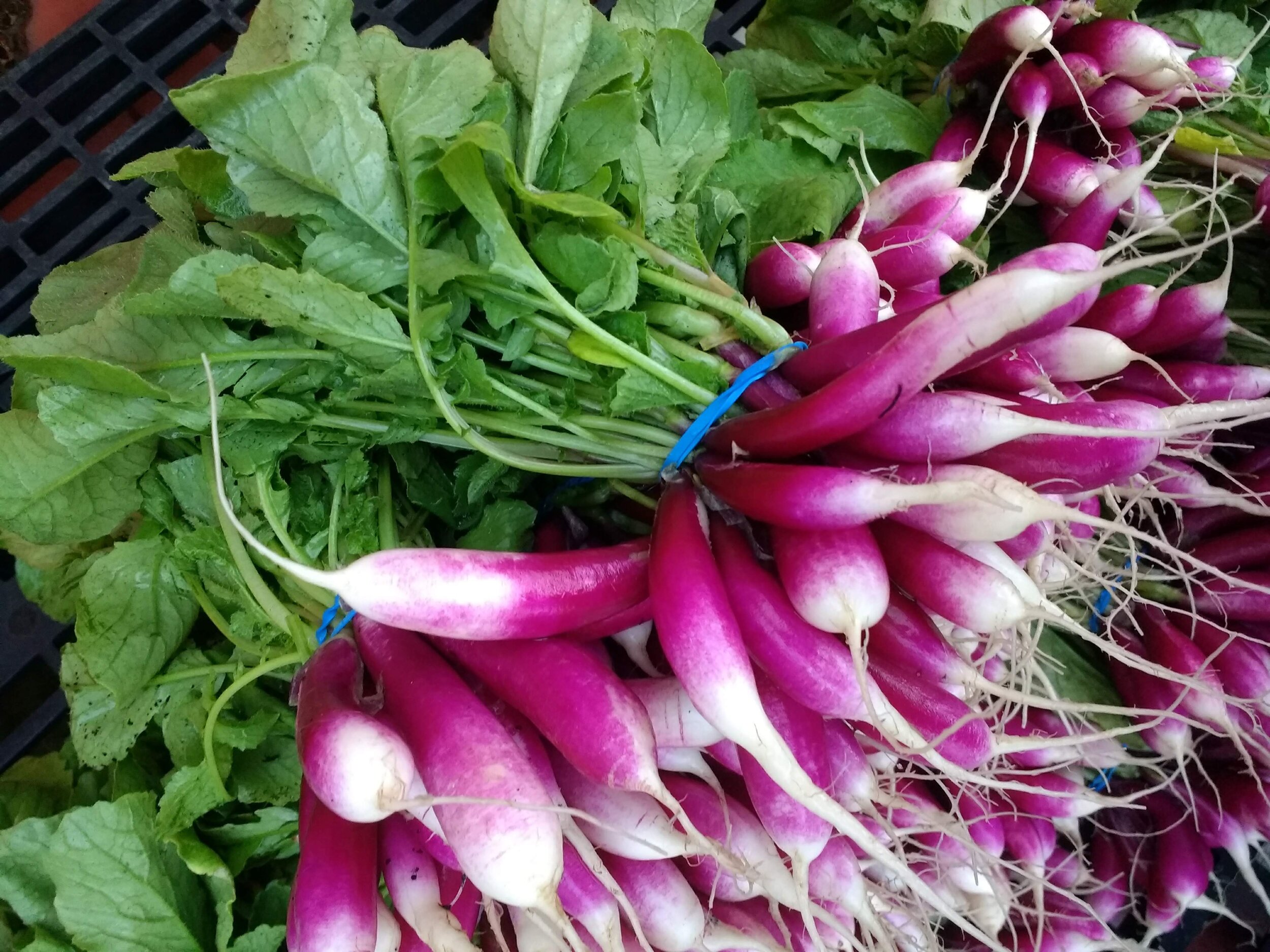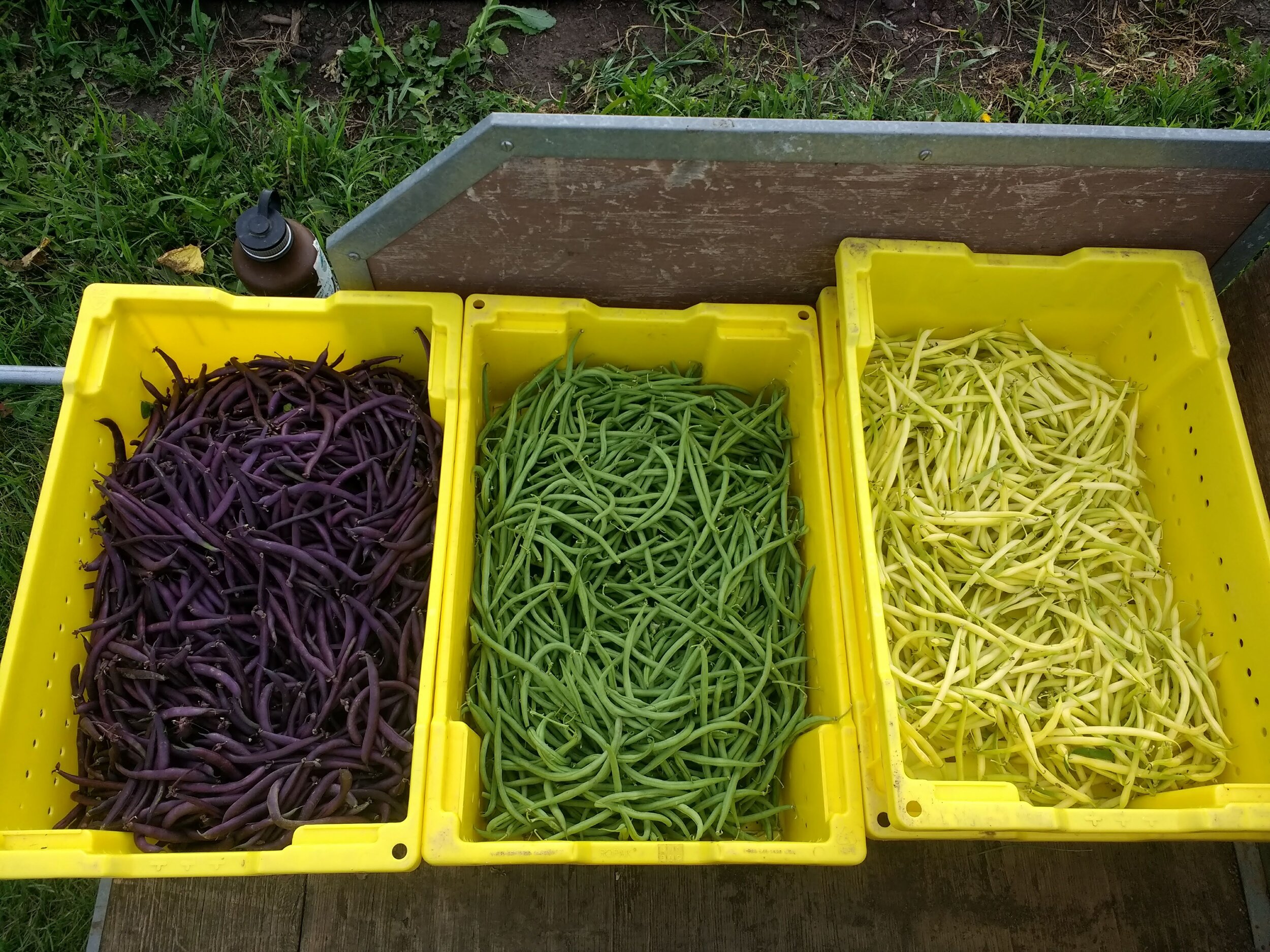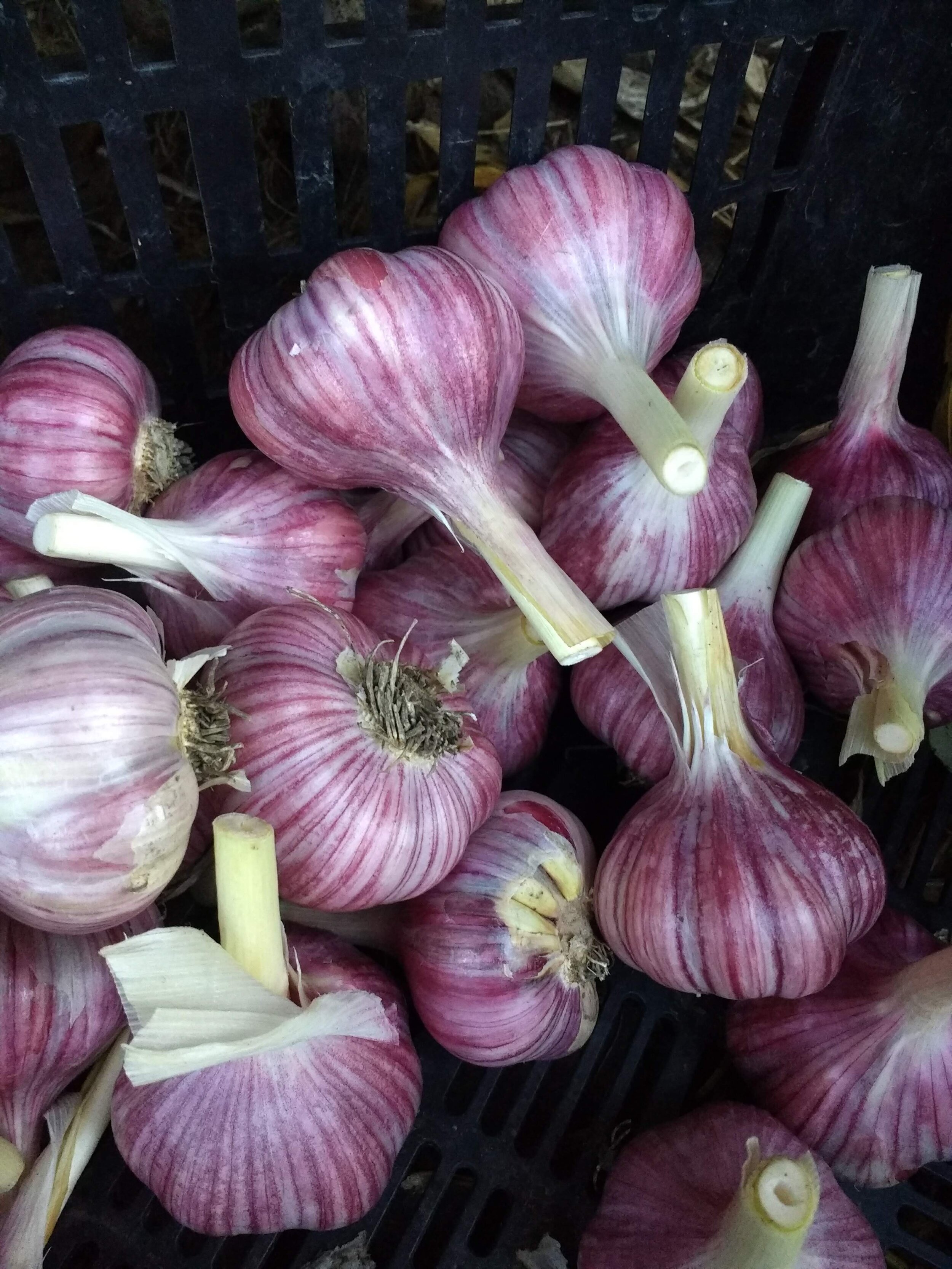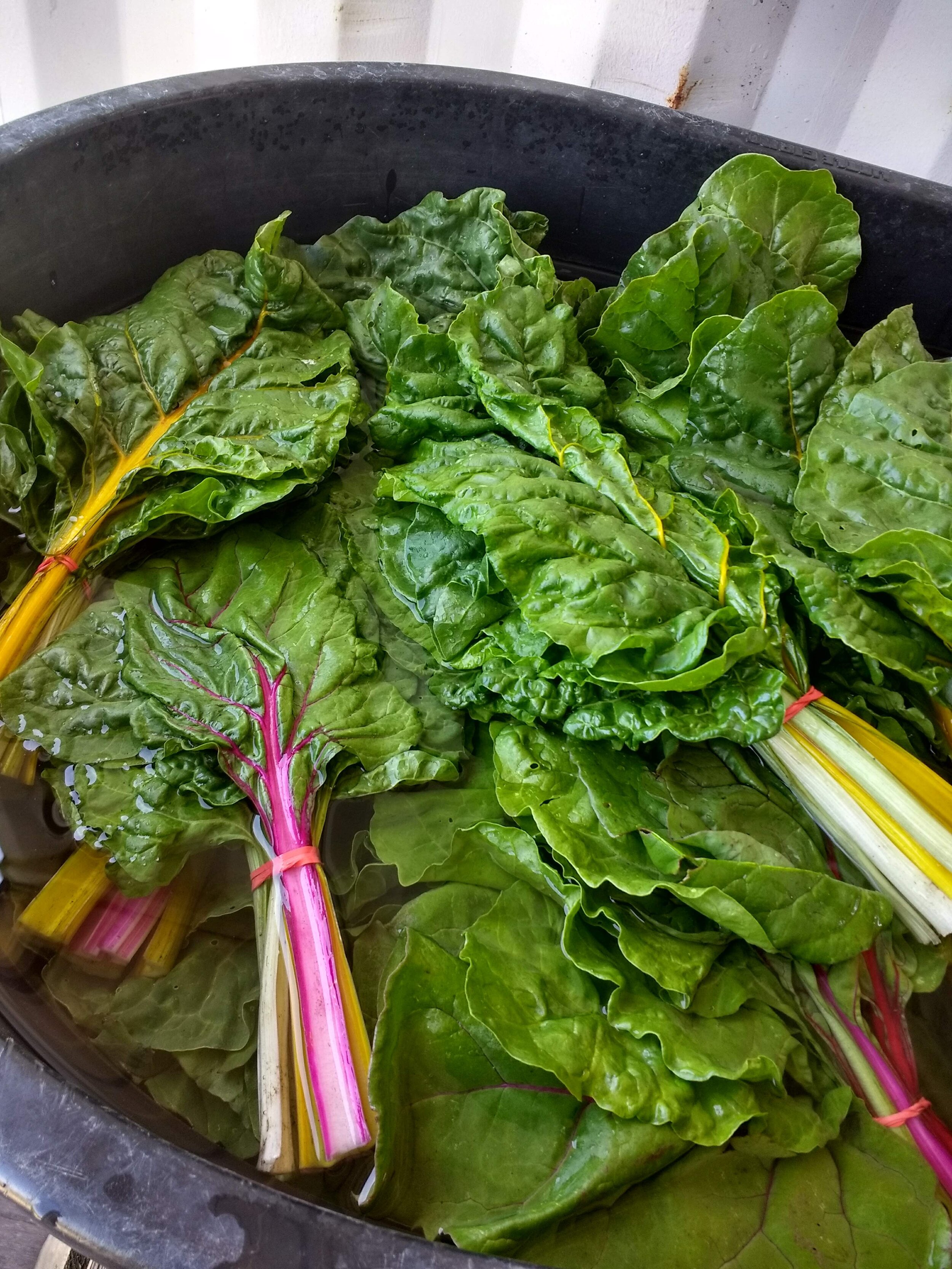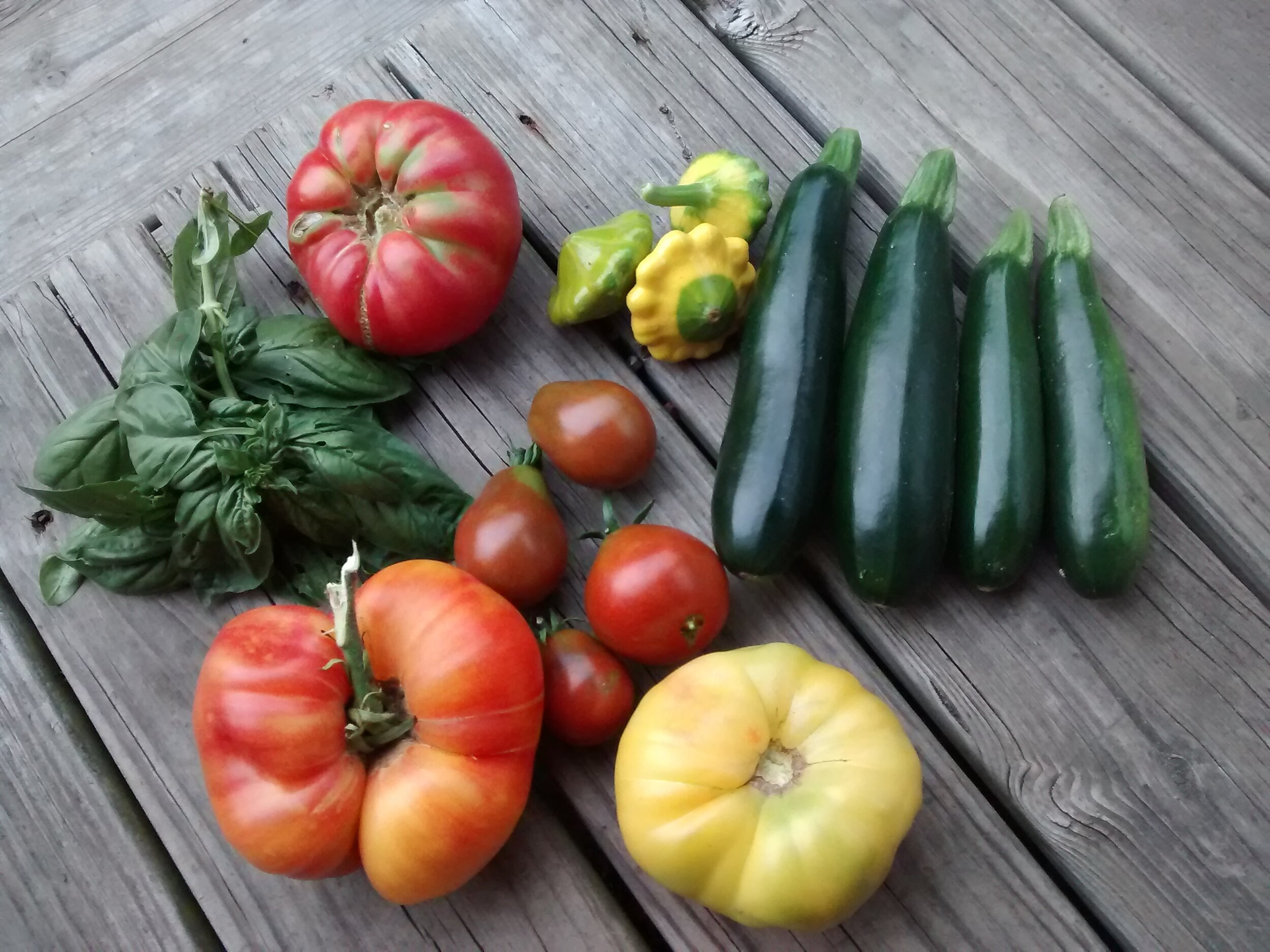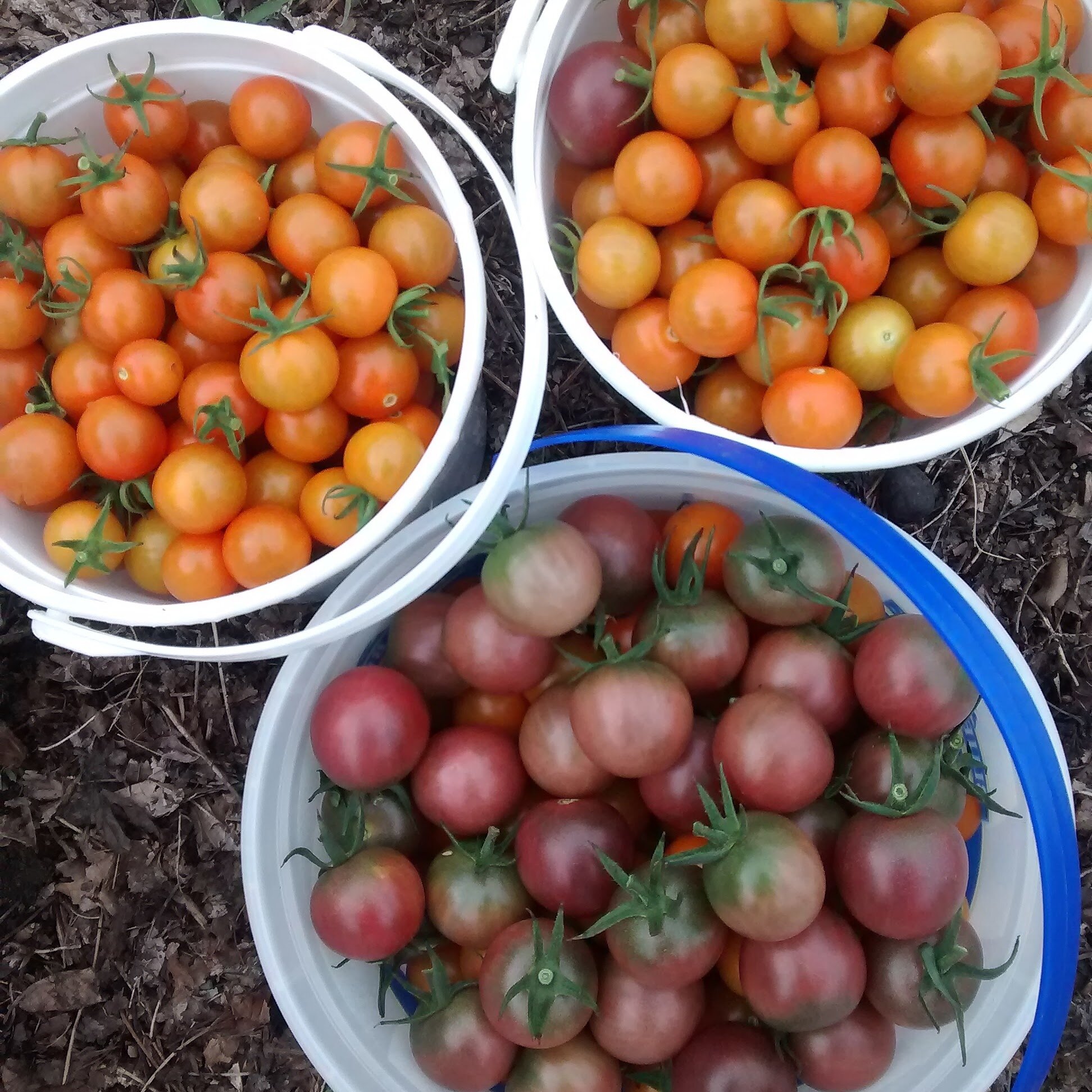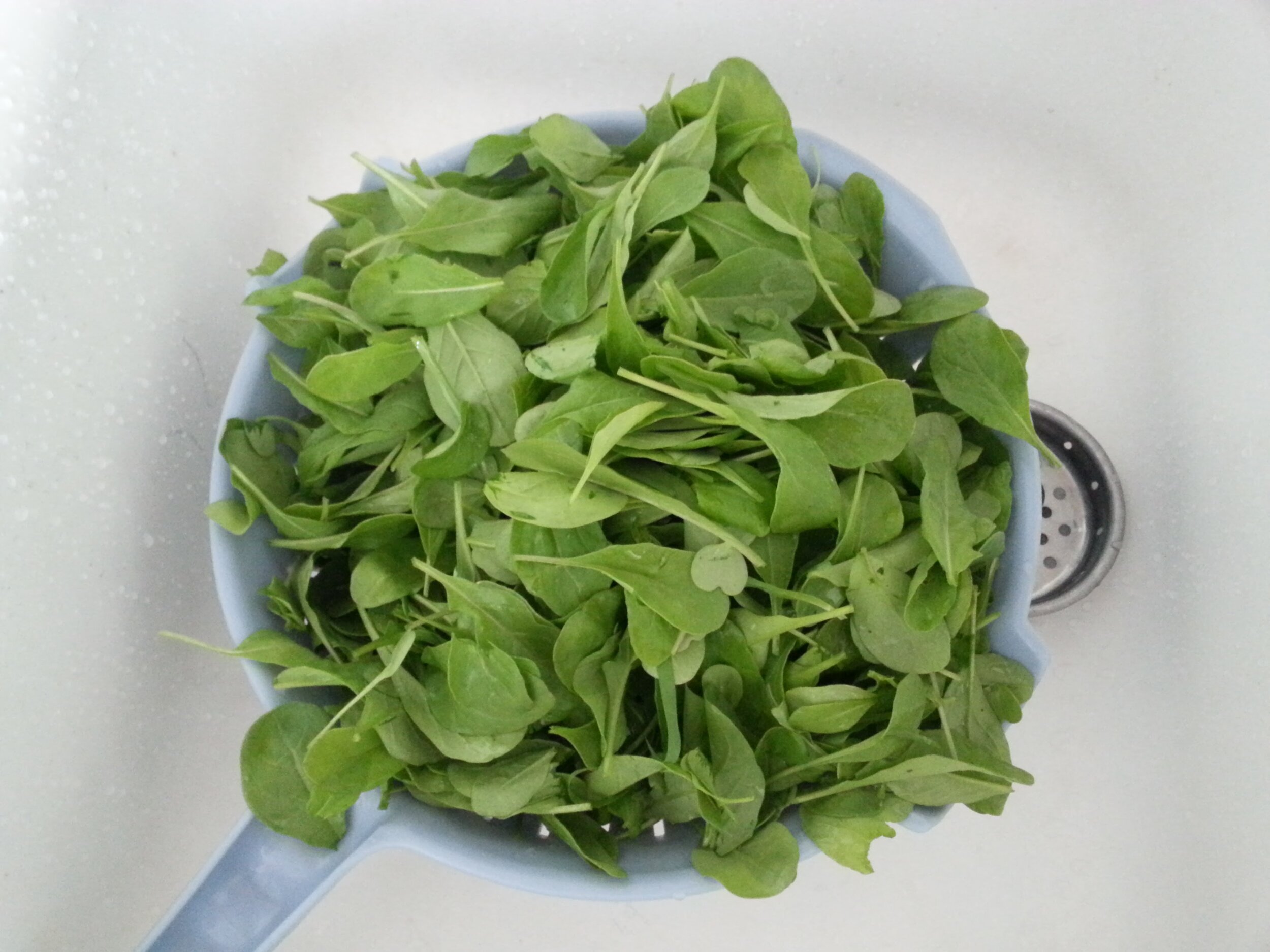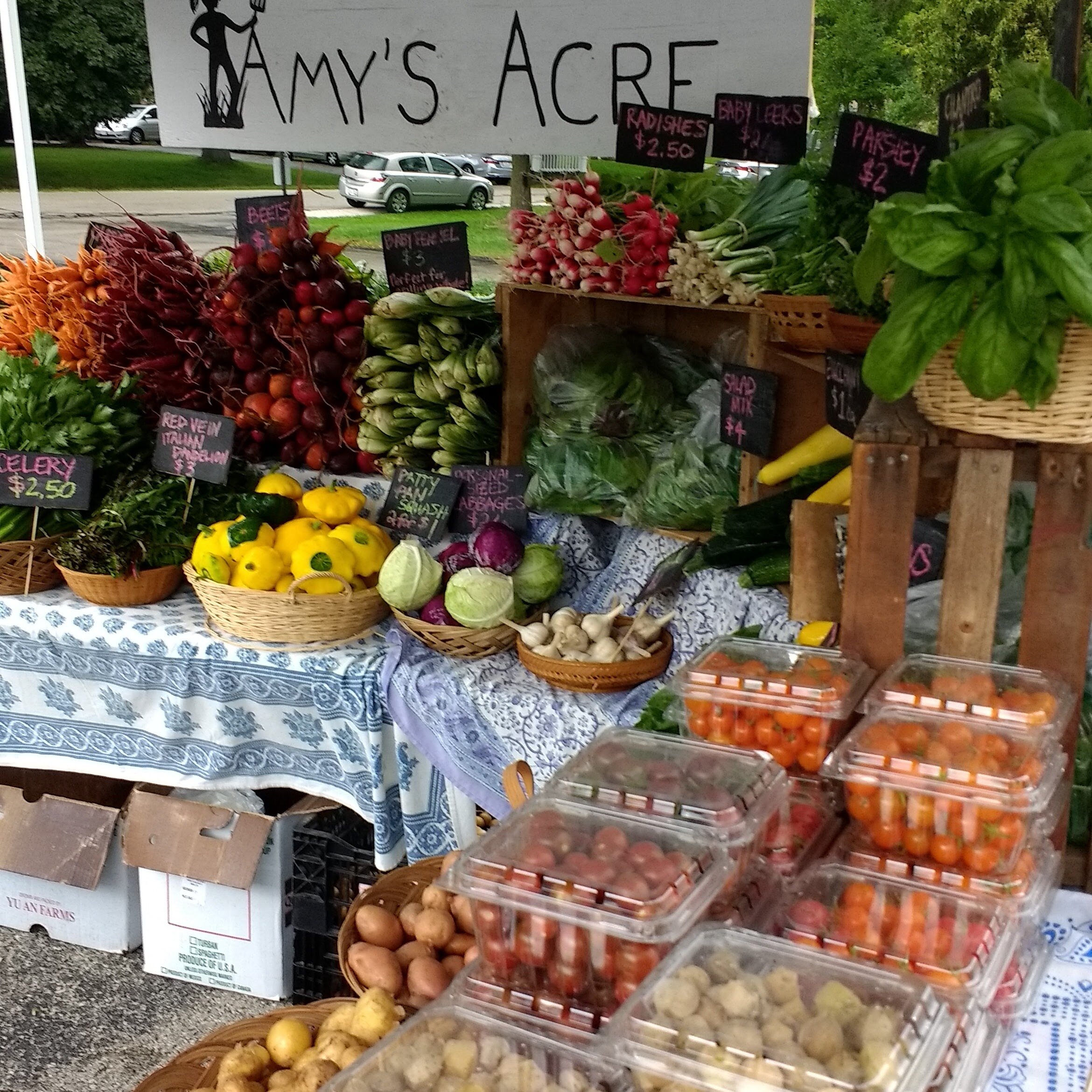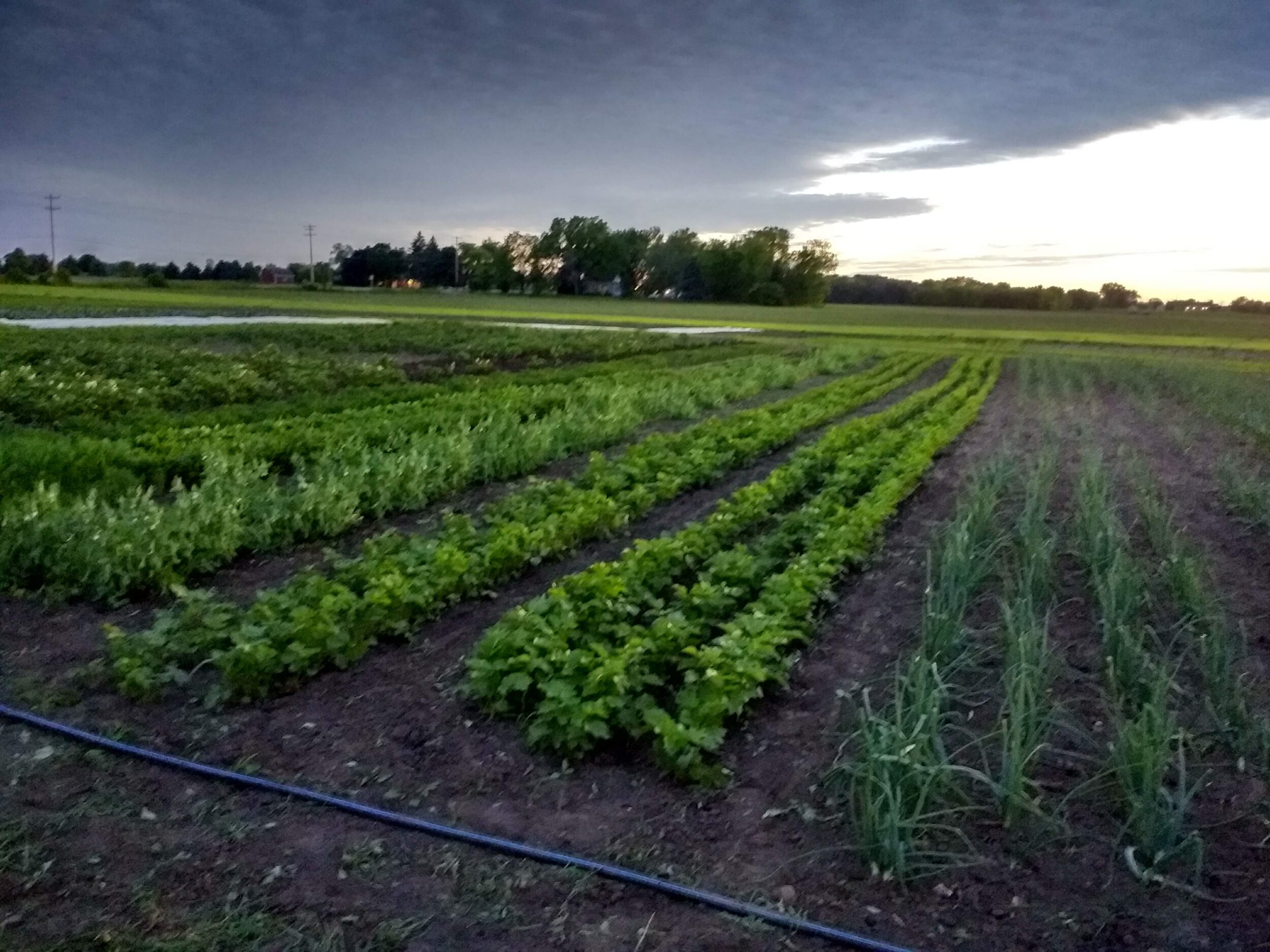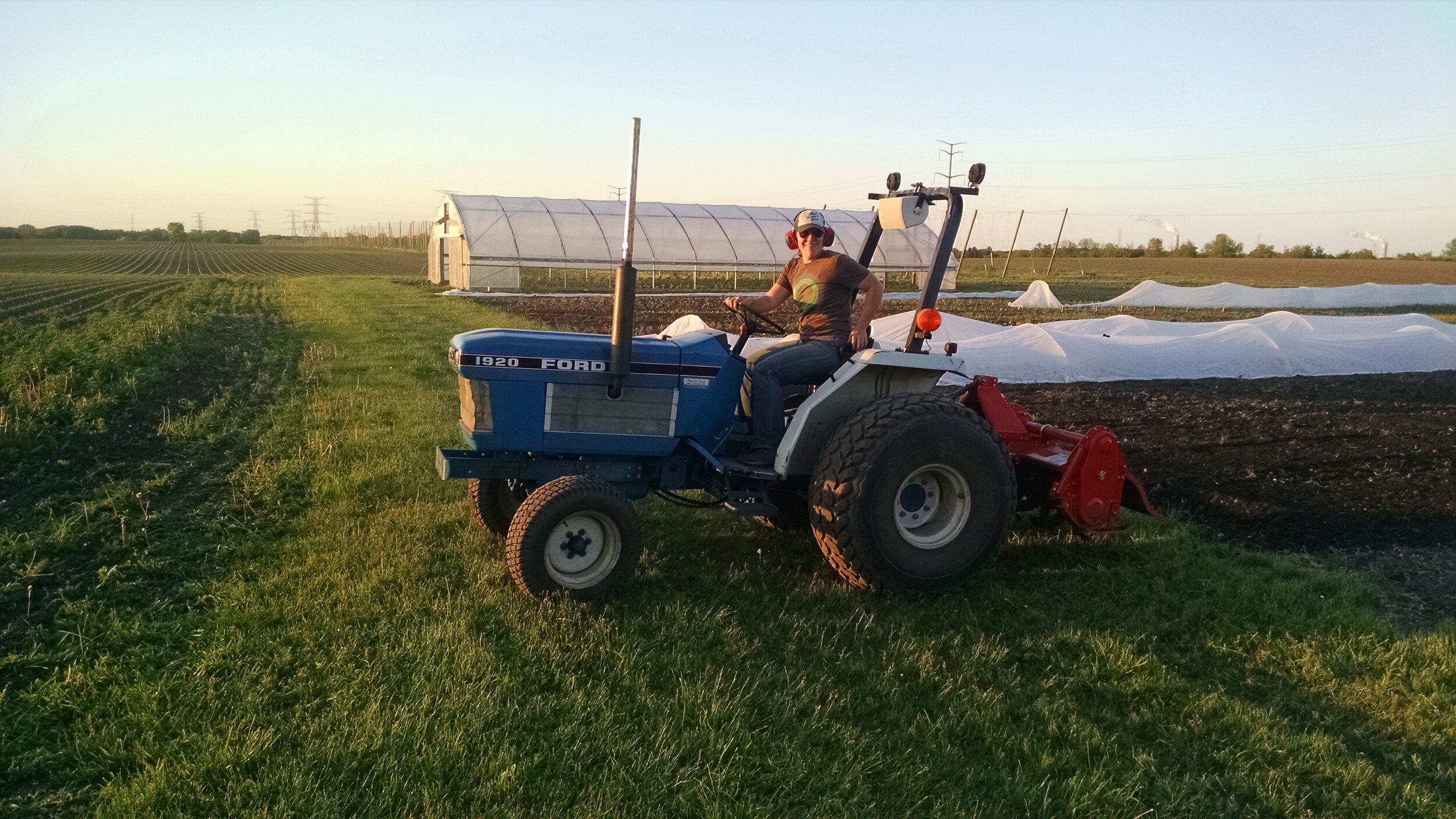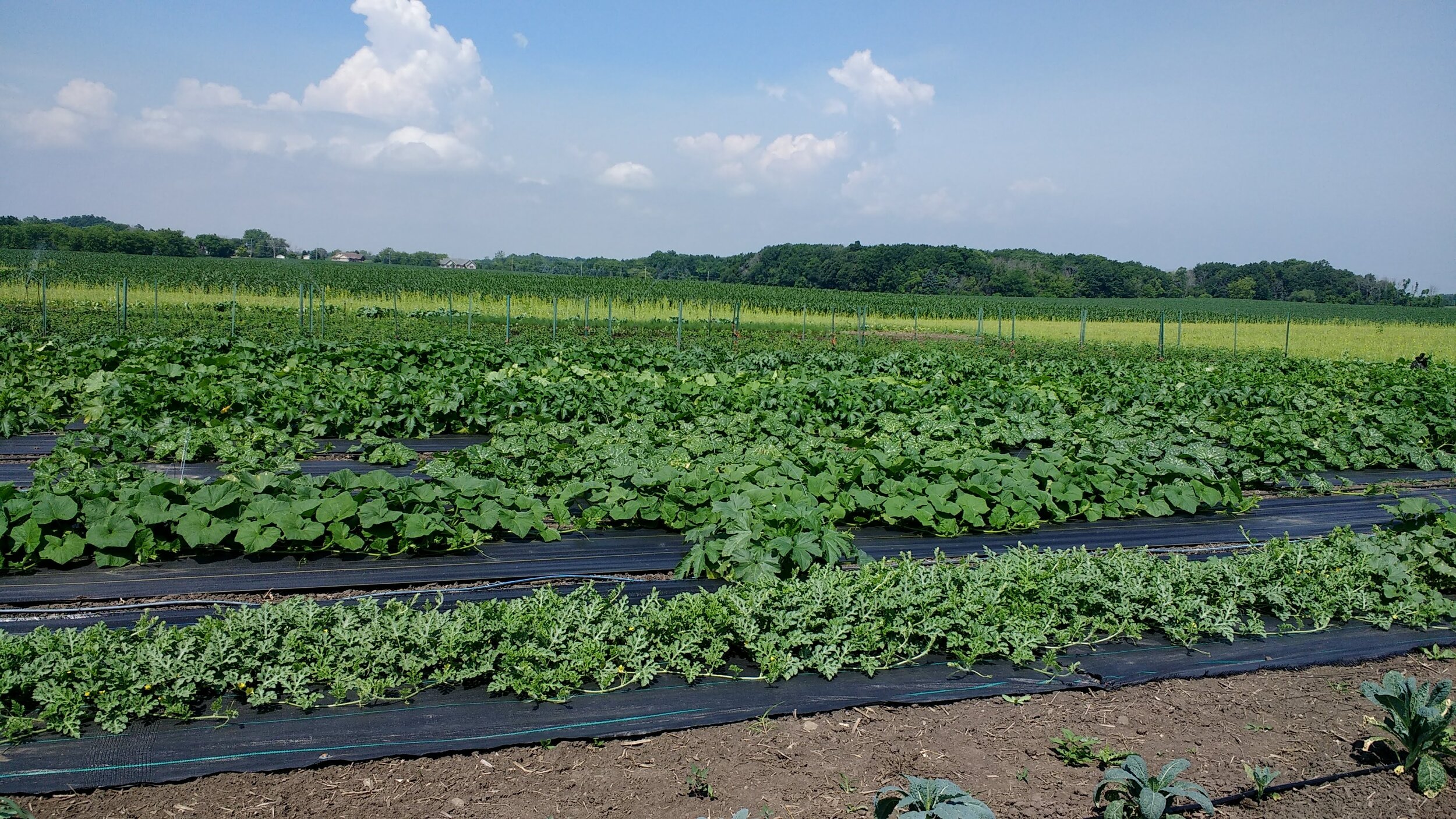
High-quality fruits, vegetables and eggs grown with intention.
Amy’s Acre is a 2-acre market garden in Caledonia, Wisconsin. Here, cultivation of good food with good vibes is guided by the principle: every living thing is a current or future living thing's food. What we do and how we be today, has impact on tomorrow, and tomorrow’s tomorrow. Life cycles, and we strive to stay in tune with that cycling to the best of our ability.
What we do: grow vegetables, raise chickens and maintain 20 total acres. Our crop and soil interventions and management decisions are informed by experience, crafted by practice and tweaked with observation.
How we be: intentional, honest, thoughtful and deliberate.
Our produce is sold direct to customers on our farm and at local farmers markets. We also provide seasonal produce to several Metro Milwaukee restaurants.
Phone
(414) 323-2210
Location
8318 6 Mile Road
Caledonia, Wisconsin 53108
amysacrellc@gmail.com
on farm stand
FARM STAND OPEN EVERY DAY 7:00 A.M. - ‘til dusk
Cash payment preferred. You may also use a check or Venmo (QR code provided in the stand). No credit card, pre-order or pre-pay option is available. The stand is entirely self serve, please stop by when you have a chance.
UPDATE NOVEMBER 14, 2025:
Seasonal produce is available daily! Our current harvest includes: lettuce, broccolini, cabbage, peppers, carrots, beets, potatoes, onions, herbs, leeks, winter squash and more. Stop by to see what’s fresh and in season!
Eggs are available daily! Our eggs are priced at $6.00/dozen. We stock our farm stand fridge with eggs every morning. The farm stand opens at 7:00 a.m.
Our hens are fed certified organic feed and roam our pastures during grazing season. In the wintertime, the mobile coops are parked near our hoop house and hens go inside during the day to dig, scratch, take dust baths and stay out of the wind and snow. At night they return to their coops to roost.
farmers market
Please come find us at the Shorewood Farmers Market
Open Sundays, June 15th – October 26th, 2025.
Hours are 9:30 am – 1:00 pm.
Location: Estabrook Park. Access the Farmers Market from the south end of Estabrook Park at 4100 Estabrook Parkway, Milwaukee, WI 53211
For more information visit: www.shorewoodfarmersmarket.com
local restaurants
Amilinda - 315 E. Wisconsin Ave, Milwaukee, WI 53202 — Greg León
Buckley’s Restaurant & Bar - 801 N. Cass Street, Milwaukee WI 53202
Mike & Pam Buckley, Chef Britt Buckley
Ca’Lucchenzo - 6030 W. North Ave, Wauwatosa, WI 53213 — Zak & Sarah Baker
Morel - 430 S. 2nd St, Milwaukee, WI 53204 — Jonathan Manyo
Carrot Bomb Catering - Washington Heights, Milwaukee, WI — Loulou Griffin
La Merenda - 125 East National Ave., Milwaukee, WI 53204 - Peter Sandroni
farm practices
background
Soil is top of mind when understanding the ‘hows’ of production at Amy’s Acre. Amy has a background in soil science and learning by doing.
Classical agronomy, created by universities, laboratories, fertilizer and chemical developers and dealers, considers soil inputs and crop removal rates in a largely linear, mathematical model.
Amy considers soil inputs and crop removal as the transformation of individual elements (aka nutrients, minerals) into other constituents (roots, stems, leaves and fruits). This transformation requires energy - starting with sunlight, and is not actually linear in nature.
For example, an application of composted and pelletized chicken manure could be described as a ratio of Nitrogen - Phosphorus - Potassium (N-P-K) OR it could be described as food for organisms that “eat” any one of those nutrients OR it could be described as surface area for chemical reactions to occur OR it could be described as substances that signal the turning on of plant genes or plant hormones that lead to root, stem and leaf growth etc. etc. The point is, one input ripples out to more than one output; what we do to/for/on/within our soil we do to/for/on/within ourselves. WHY does an element, nutrient or mineral cycle? Are the delineations between biology, chemistry, physics real or simply an agreed upon, simplified viewpoint that’s easier to memorize and explain? What starts as sunlight energy becomes root, stem, leaf, or fruit and when eaten, root, stem, leaf or fruit becomes human body. At some point, what is part of a human body, takes on a different form. The cycle of transformation repeats, with no beginning, no end, no off switch.
tools of the trade
Amy uses a variety of tools including a refractometer, mineral and biology soil tests, and plant tissue tests to “take pictures” of what is happening in her soil and her crops.
She also takes time to observe with her five (+) senses to learn what or who else is here - who and where are the earthworms, insects, snakes, frogs, toads, mice, moles, voles, birds, present? What colors are the leaves? How about the roots? Are there flowers present yet? When did it last rain? What’s the impact of last night’s rain?
Collectively, living things create spaces for air and water to infiltrate soil. As air, water and energy are readily available, nutrient cycling (transformation) continues.
But what about the actual practices? Amy uses tractors for tillage and physical soil manipulation. She considers what the intention of the tillage pass is before even turning on the engine. Will tillage be used for turning in cover crop or finished crops? Is it for creating a seed bed for small, fine seeds? Is it for preparing the area for transplanting? Can the pass also be used for incorporation compost or another crop input? Tillage proceeds with a specific intention, never for the sake of tillage alone.
To manage weeds and cultivate crops Amy uses a variety of different hoes, hand weeding and mechanical weeding with a cultivating tractor. The choice of tool depends on the crop that needs weeding, the stage of the crop, the soil conditions (wet or dry), what is the intention of the weeding - to encourage crop growth, to prepare for harvest, to eliminate weeds going to seed, to incorporate fertilizer, etc. Much like tillage, cultivation is done with specific intention.
crop & soil inputs
For plant health and harvest abundance, Amy uses a variety of crop and/or soil inputs including but not limited to:
Compost for building organic matter/surface area for transformation to occur and microbial inoculation
Composted chicken manure - as a substitute for animal impact on the land, source of plant available phosphorus, and to stimulate biology
Gypsum - to encourage shifts in nutrient availability on soil colloids while minimizing pH adjustments
Homemade fermented plant juices - to pass plant available nutrients from “weeds” to crops
Raw milk, molasses, liquid calcium and liquid micronutrient blends - to nudge the system based on what is being observed
These inputs are applied by spreading by hand or by mixing with water to spray on the soil and crops. - Please ask your farmer a better question than “do you spray?” Not all sprays are synthetically derived chemicals. You want to know more, so ask for more.
By now you understand that intention is what guides the Amy’s Acre. Farming with intention leads to nourishing food. You can taste and experience that intention in produce from Amy’s Acre. Flavor, color and shelf life are all testaments.
Amy encourages everyone to use their own current understanding of food and self-nourishment to ask better questions of their farmers and food producers and to not let a label or lack of a label think for them or stand in the way of knowing. Seize the opportunity available to learn more. From her viewpoint, compliance with USDA Organic labeling requirements is about defining and applying limits for a farm rather than encouraging the expansiveness of what is possible through intentional agricultural practice. She does not align with the idea that the USDA (United States Department of Agriculture) could be overseeing commodity, industrial agriculture, hunger relief efforts and certified organic production without conflict of interest. Government oversight is not a requirement for safe, healthy and abundant agricultural practice in the USA or abroad.

